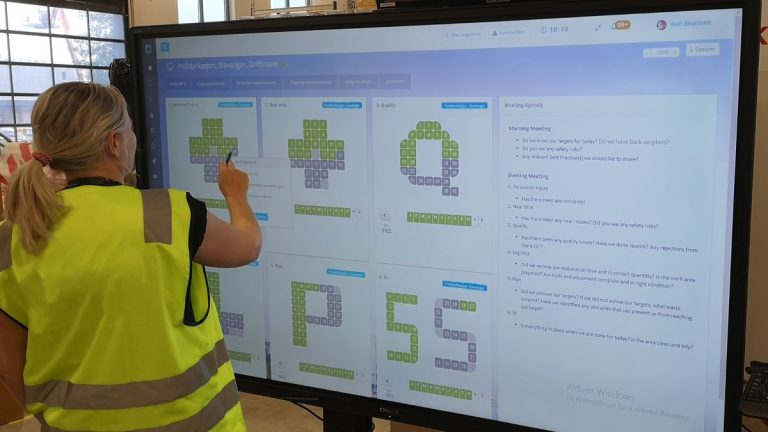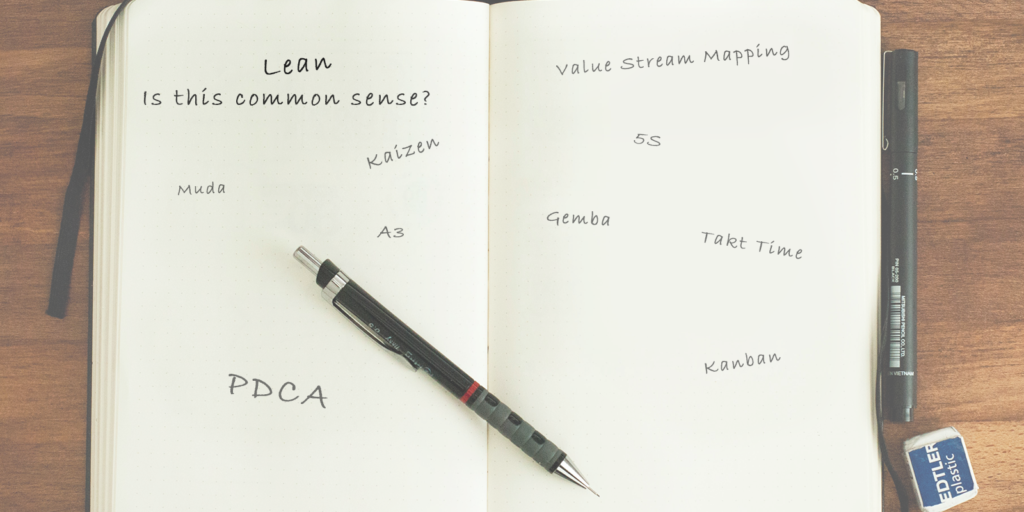- Product
Interactive boards. Fully customizable.
Capture, prioritize and follow up improvements.
Report and manage incidents. Visualize reports and statistics.
Operationalize your strategies and integrate your whole organization.
Access your tools in Microsoft Teams.
Customized templates. Problem solving, business development etc.
Manage project individually or in portfolios with visual and interactive tools.
Create and share best practices, one-point-lectures and standards.
Easy access to tasks, improvements and incidents.
Integrate DigiLEAN with your existing IT systems.
Meeting the demand of larger organizations.
High security level by default.
In less than 4 min
- Use Cases

Interactive tools for both shop floor and administration.
Visual project management.
Maintain standards. Manage incidents and discrepancies.
Manage tasks, integrate with problem-solving and continuous improvement.
Lean daily management tailored for healthcare.
Team task management, problem-solving and visualization.Case management, improvements, problem-solving, and strategy alignment.We have a LEAN solution for you too. Just ask!
We meet the demand of larger organizations.
- Pricing
- Blog
- Career
- Product
Interactive boards. Fully customizable.
Capture, prioritize and follow up improvements.
Report and manage incidents. Visualize reports and statistics.
Operationalize your strategies and integrate your whole organization.
Access your tools in Microsoft Teams.
Customized templates. Problem solving, business development etc.
Manage project individually or in portfolios with visual and interactive tools.
Create and share best practices, one-point-lectures and standards.
Easy access to tasks, improvements and incidents.
Integrate DigiLEAN with your existing IT systems.
Meeting the demand of larger organizations.
High security level by default.
In less than 4 min
- Use Cases

Interactive tools for both shop floor and administration.
Visual project management.
Maintain standards. Manage incidents and discrepancies.
Manage tasks, integrate with problem-solving and continuous improvement.
Lean daily management tailored for healthcare.
Team task management, problem-solving and visualization.Case management, improvements, problem-solving, and strategy alignment.We have a LEAN solution for you too. Just ask!
We meet the demand of larger organizations.
- Pricing
- Blog
- Career
Lean and common sense

How LEAN is normally defined
Lean as we know it today is typically referring to the Toyota Production System (TPS) developed by Kiichiro Toyoda, Taiichi Ohno and the Toyota company back in the 1930s. However, the foundation was established with Henry Ford and his line production and even before that, the Arsenal in Venice in the 1450s.
The concept is essentially to eliminate waste to maximize customer value. Produce only what the customer needs, when it’s needed, to the right quality. Create a flow in your value chain and production, and continuously seek to improve, optimize, and perfect your operations.
You can read more about 5 principles of lean here.
Many methods and tools used are defined as lean. Here are some common examples.
Kaizen
Kaizen is a strategy where employees continuously participate in incremental improvements – also referred to as continuous improvement.
5S
5S stands for five different focus areas to ensure optimal flow.
Seiri – Sorting
Seiton – Set in order
Seiso – Shine
Seiketsu – Standardize
Shitsuke – Sustain self-discipline
Kanban
A process to regulate flow by using cards and process steps.
Value Stream Mapping
Visual map of the business or production processes. Identify improvement areas visually and design the preferred value stream map for the future.
PDCA
A method to implement changes and improvements. The key is to not accept the change without measuring and checking if the targets are met. If not, adjust and adapt.
Muda
I’d call it a mindset or a focus area to eliminate anything that does not add customer value.
Gemba
“I don’t believe it before I see it with my own eyes”
Often referred to as Gemba Walk. It is indeed a walk, a walk in the production area where the real physical work happens. This gives a better understanding of issues and an opportunity to identify new improvements.
Takt Time
A measurement of your production flow according to the demand. Tact time is a figure telling you how long time you can spend on one unit to meet the customer demand for a production period.

A3
The A3 is a tool used for structured problem solving or handling improvements. The limited workspace and pre-defined templates force users to cut to the core of the problem.
Hoshin Kanri
A tool or method to ensure that operations align their activities with the company strategies. It also includes horizontal alignment including the middle management.
LEAN is common sense

Aristoteles was the first known person to discuss common sense. The concept was that humans and animals could perceive placement, movement of objects to identify and distinguish them. This gives an awareness and ability to expect normal behavior and identify anomalies.
If we return to Toyota, who perhaps is the most successful lean manufacturer in history, what they have done is basically to succeed and define their methods along the way. Other companies have used these methods, some adapted to their own understanding, and succeeded. The theories and methods are proved to be effective for many different organizations. This means we have a common description and language for something that can help most organizations – and it is repeatable.
- Involve and engage all employees. Why not? You have employees for a reason.
- Become better (continuous improvement) – no one wants to stick with status quo lose in the long run.
- Keep things clean and organized – this is something we are thought growing up.
Map and terrain don’t always match – go see for yourself.
Why is it still so difficult?
Practicing lean isn’t difficult in theory, but there are many reasons it is difficult to execute.
Change
Very often lean requires a different way of thinking. “Different” insinuate change which is the most difficult thing organizations come across. However, change is something the organization can be good at if they practice. Lean and continuous improvement is all about constantly make minor changes to improve the performance.
Humans use habits to reduce stress, simplify their life and put mental effort on other focus areas. Introducing change of habits, re-introduce stress that must be processed. It is important that the management is onboard and support the initiative.
Culture
Lean thinking must be shared throughout the organization. All employees must take ownership of the process and contribute. A culture for continuous improvement must be established.
One way to get there is to train employees. A drill in Japanese lean terminology isn’t necessarily the right thing but translate the mindset into a common language for your organization gives a better overall understanding of the lean purpose.
Tools and Systems
Established companies normally run with some kind of a business management system, ERP, MRP etc. Such systems have a lot of processes built in forcing the organization to behave in a certain way. Old system may not give the flexibility to run modern processes in the same way as newer systems do, and they can prevent a company from practicing lean while complying with the IT-systems’ business process.
Business Process Management
Larger companies and corporations often have their business process management system with process descriptions, instructions, manuals and procedures. All employees are obligated to follow their BPM, so introducing new work methods like lean may also require a re-write of the company’s BPM system. If you’re lucky, lean can be incorporated with it, or comply, but in other cases, a customer will experience this as an obstacle.
Organizational Alignment
Going full scale with lean requires horizontal and vertical alignment. Top management must support the initiative. Employees must be engaged. Strategies must be aligned vertically. This means that operations must be sure that their activities support the high-level strategies.
Subsequently, departments or divisions across the organization must also align their activities, both with each other (horizontal alignment) and with the business strategy (vertical alignment).
Seems logical, right?
Still many companies fail. Silo thinking, middle management with wrong incentives isn’t capable of seeing the big picture and do what’s best for the company as a whole.
Trust your employees to contribute and think outside their daily responsibility. Having an organization that is able to think together and share ideas is much more valuable for companies in an ever-evolving market than specialists with no autonomy.
Dare to be different
Dare to change
Dare to be LEAN
We’d love to show and tell more!
© 2024 DigiLEAN AS
